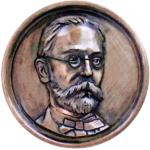Current issue
Online first
Special issues
Archive
About the Journal
Editorial Board
Editorial Council
Reviewers
Editorial guidelines
Publication ethics
Guidelines for reviewing
Remarks on “ghostwriting”
Copyrights and Open Access rule
GDPR Privacy Notice – for the authors of articles sent for publication in the "Komunikaty Mazursko-Warmińskie ("Masuro-Warmian Bulletin")
Contact
Price list
The interiors of a Protestant church as a sign of social conservativeness of the nobility in the Duchy of Prussia
1
Uniwersytet Mikołaja Kopernika w Toruniu
Online publication date: 2021-07-23
Publication date: 2021-07-23
KMW 2021;312(2):248-270
KEYWORDS
TOPICS
ABSTRACT
This paper sketches the reformative changes in the Duchy of Prussia initiated by Albert Hohenzollern and presents the role of a painting – a work of art which is to reinforce the Christianisation of the Prussians and teach the basic rules of faith that as highlighted by the Lutheran theology. First, the author presents the process of blanking the iconoclastic movements by the Duchy authorities while defining the role of paintings in the new Church as well as the evolution triggered by Martin Luther aiming at eliminating the painting as a medium between God and man. The paintings were important elements of the church’s interior until the second half of 18th century in the leading artistic centre of Königsberg and its artists.Building a Lutheran state in the Duchy of Prussia was tied with a change in the elites, departure
of the Teutonic knights and the reliance of the prince on the new aristocracy incoming to Prussia. Despite the reshuffle within the elites, the social structures of the Duchy became even stiffer as the feudal system was retained. Königsberg remained the decision centre and the prince was still largely influencing the appointments to church positions and all initiatives of the collators, such as building family chapels, buing new equipment or arranging renovations. The nobility used art as a means of self-presentation, commemorating their own families, which led to a manner of privatisation of the interior of countryside churches with the epitaphs, tombstones and heraldic elements on altars, galleries, organs and confessionals.The iconography of liturgical representations was immune to new waves within Lutheranism, such as pietism, which suggested new forms of presentation in paintings but lost with the tradi-tional, didactic iconography of the altars, galleries, baptismal fonts and pulpits. Until the end of the modern period, the interior of a Lutheran church in the Duchy of Prussia did not undergo significant changes and focused on both preserving the glory of the collator’s family and illus-trating rudimentary truths of the Lutheran confession.
Share
RELATED ARTICLE
We process personal data collected when visiting the website. The function of obtaining information about users and their behavior is carried out by voluntarily entered information in forms and saving cookies in end devices. Data, including cookies, are used to provide services, improve the user experience and to analyze the traffic in accordance with the Privacy policy. Data are also collected and processed by Google Analytics tool (more).
You can change cookies settings in your browser. Restricted use of cookies in the browser configuration may affect some functionalities of the website.
You can change cookies settings in your browser. Restricted use of cookies in the browser configuration may affect some functionalities of the website.




